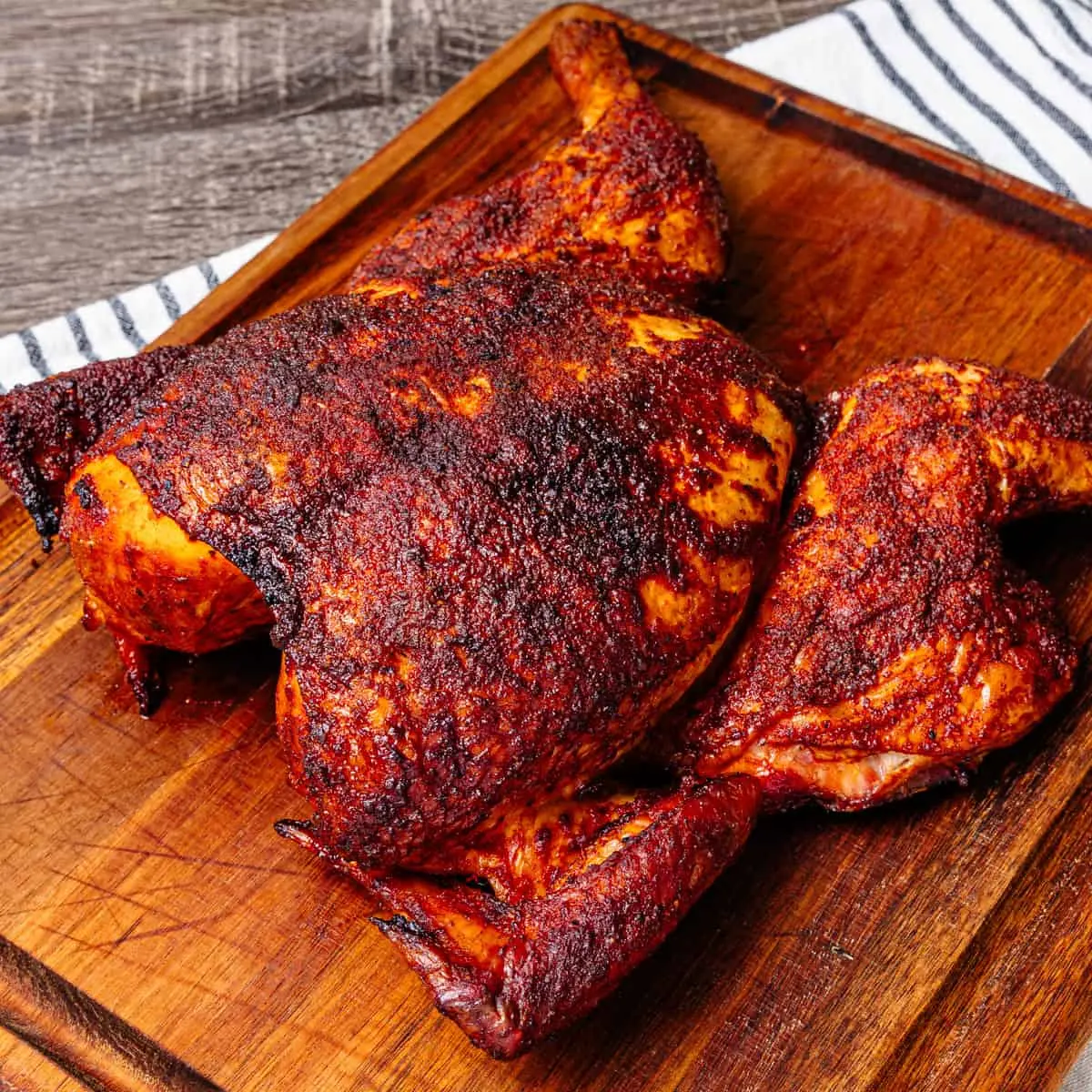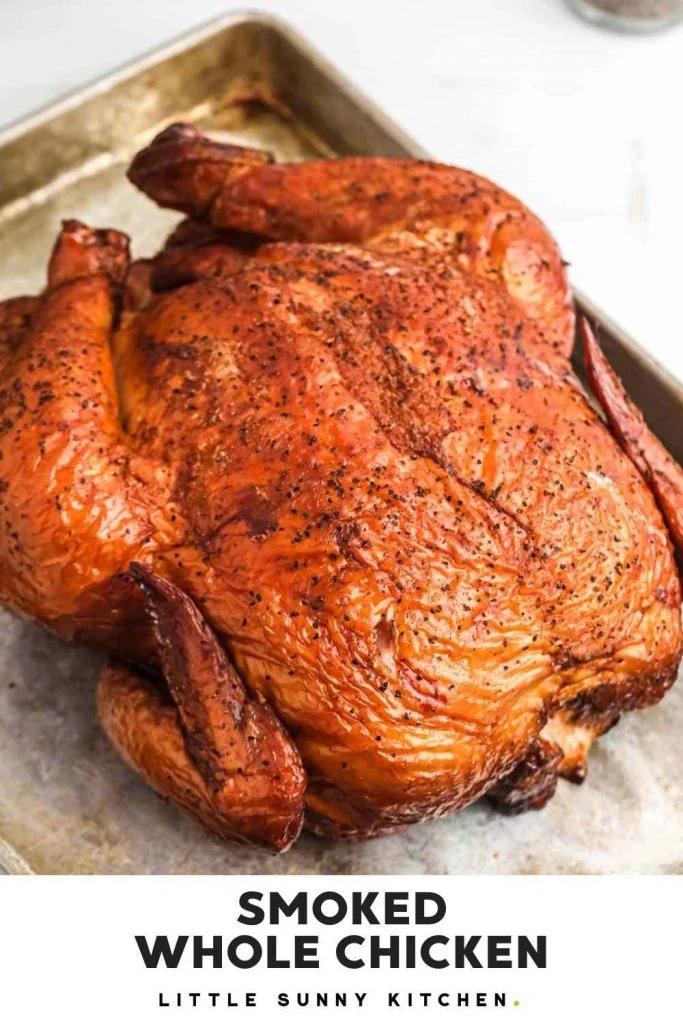If you're looking to elevate your culinary skills and create a mouthwatering smoked whole chicken, you've come to the right place. In this article, we'll delve into various methods to enhance the flavor of your chicken, including brining, injecting, marinating, and more. Whether you're a seasoned pitmaster or a novice backyard cook, these techniques will help you achieve a delectable result.
Should I Brine a Whole Chicken Before Smoking?
The decision to brine a whole chicken before smoking largely depends on personal preference and the desired flavor profile. Brining involves soaking the chicken in a saltwater solution, allowing the meat to absorb moisture and flavor. While it is not necessary for every recipe, brining can significantly enhance the taste and tenderness of the chicken.
Brining is particularly beneficial for older chickens, such as retired laying hens, as it helps to tenderize the meat. Additionally, if you prefer a saltier or spicier flavor, brining can infuse the chicken with these desired tastes. However, it's important to note that chicken typically doesn't require an extensive brining time. A couple of hours are usually sufficient to impart a flavorful impact.
Alternatively, if you're using other methods like beer-can chicken or cooking the chicken on a rack with a pan of water underneath, you can rely on these liquids to enhance the chicken's flavor without the need for brining. Experimenting with dried peppers or spices in the steam bath can add a unique and unexpected twist to your smoked whole chicken.
Injecting, another technique to infuse flavor into the chicken, involves using a syringe to deliver marinades or other liquids directly into the meat. While some pitmasters find injecting to be cumbersome and time-consuming, others have achieved excellent results. It's important to note that the effectiveness of injecting can vary, so it may require some trial and error to find the right technique that suits your preferences.

Another method to consider is vacuum-brining, which involves sealing chicken parts in vacuum-tight bags with a brine solution. While this technique can yield favorable results, it requires careful monitoring of salt levels to ensure the chicken isn't overly seasoned.
Ultimately, it's up to you to decide which method resonates with your taste buds and cooking style. Some pitmasters prefer a simpler approach, relying on basic seasoning like salt and pepper, and adding an onion to the cavity for additional flavor. This straightforward technique can produce a delicious smoked whole chicken with minimal effort.
Creating a Flavorful Smoked Whole Chicken
Now that you have a better understanding of the various methods for enhancing flavor, let's explore some tips and techniques to create a mouthwatering smoked whole chicken:
Preparing the Chicken
Start by thoroughly cleaning and patting dry the chicken. Removing any excess moisture will help achieve a crispy skin during the smoking process. You can also trim any excess fat or skin, although this is a matter of personal preference.
Seasoning the Chicken
When it comes to seasoning, the possibilities are endless. You can keep it simple with a classic combination of salt and pepper or experiment with a variety of dry rubs and spice blends. Ensure that the seasoning is evenly distributed, covering both the exterior and interior of the chicken.
Preheating the Smoker
Before placing the chicken in the smoker, preheat it to a temperature of around 350°F (175°C). This will ensure a consistent cooking environment and help to achieve the desired smoky flavor.
Smoking the Chicken
When placing the chicken in the smoker, ensure that it is positioned breast-side up. This will help to retain moisture and ensure even cooking throughout the bird. Maintain a steady temperature throughout the smoking process, aiming for around 225-250°F (107-121°C) for a tender and juicy result. Consider adding wood chips or chunks to the smoker to infuse the chicken with a distinct smoky aroma.
Monitoring Internal Temperature
It's crucial to monitor the internal temperature of the chicken to avoid undercooking or overcooking. The USDA recommends cooking poultry to an internal temperature of 165°F (74°C) to ensure it is safe to consume. Use a reliable meat thermometer to check the temperature at the thickest part of the breast and thigh.
Frequently Asked Questions
- Q: Can I marinate the chicken instead of brining?
- Q: How long does it take to smoke a whole chicken?
- Q: Can I use a gas or electric smoker?
- Q: Should I rest the chicken after smoking?
A: Absolutely! Marinating the chicken can provide a different flavor profile. Experiment with various marinade recipes and allow the chicken to soak in the flavors for several hours before smoking.
A: The cooking time will vary depending on the size of the chicken and the smoker's temperature. As a general guideline, budget around 20 minutes per pound of chicken at 225-250°F (107-121°C).
A: Absolutely! While traditional charcoal or wood smokers are often preferred for their authentic smoky taste, gas and electric smokers can also produce excellent results. Just ensure you follow the manufacturer's instructions and maintain a consistent temperature.
A: Yes, it's recommended to let the chicken rest for about 10-15 minutes after smoking. This allows the juices to redistribute and results in a more flavorful and tender meat.
Remember, there is no right or wrong way to smoke a whole chicken. The key is to experiment, have fun, and develop your unique flavor combinations. Whether you choose to brine, inject, or simply season with salt and pepper, the result will be a delicious smoked whole chicken that will impress family and friends alike.
If you want to know other articles similar to The best smoked whole chicken recipe: elevate flavor with techniques you can visit the Cooking category.


Related Articles